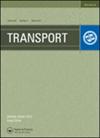撞击速度对全身正面雪橇撞击胸部损伤结果的影响
IF 1.3
4区 工程技术
Q3 TRANSPORTATION SCIENCE & TECHNOLOGY
引用次数: 1
摘要
安全带约束在显著提高乘员安全性的同时,其防护效率仍需进一步提高,以减少碰撞的后果。在40公里/小时的速度下,安全带约束载荷对胸部损伤的影响已经进行了测试和记录。然而,对不同冲击速度下约束系统效率的综合分析尚未得到充分的报道。本研究的目的是利用高生物保真度人体有限元模型分析不同碰撞速度下安全带载荷对胸部损伤的影响。目前的仿真是基于全身正面滑橇试验配置,使用一种替代的死后人体受试者(PMHS)建立的。在全因子实验设计中,根据设计变量,如安全带位置参数和碰撞速度,分析了模拟的胸部损伤结果。这些结果特别提到了基于应变的损伤概率和由参数变化引起的四点胸部偏转。结果表明,冲击速度对胸部损伤的预后有影响。在本研究中,当碰撞速度从20 ~ 40 km/h变化时,如果安全带位于胸骨中部,3根以上肋骨骨折的肋骨损伤风险将从40%左右增加到接近100%。对胸部的巨大伤害主要是由惯性的变化引起的,这表明胸部的伤害受冲击速度的影响很大。此外,肋骨骨折风险和胸部挠度与安全带位置参数的变化呈非线性相关。该研究方法可为安全带虚拟设计提供参考。同时也为胸部损伤机制的研究提供了依据。本文章由计算机程序翻译,如有差异,请以英文原文为准。
THE INFLUENCE OF IMPACT SPEED ON CHEST INJURY OUTCOME IN WHOLE BODY FRONTAL SLED IMPACTS
While the seatbelt restraint has significantly improved occupant safety, the protection efficiency still needs further enhance to reduce the consequence of the crash. Influence of seatbelt restraint loading on chest injury under 40 km/h has been tested and documented. However, a comprehensive profiling of the efficiency of restraint systems with various impact speeds has not yet been sufficiently reported. The purpose of this study is to analyse the effect of the seatbelt loadings on chest injuries at different impact speeds utilizing a high bio-fidelity human body Finite Element (FE) model. Based on the whole-body frontal sled test configuration, the current simulation is setup using a substitute of Post-Mortem Human Subjects (PMHS). Chest injury outcomes from simulations are analysed in terms of design variables, such as seatbelt position parameters and collision speed in a full factorial experimental design. These outcomes are specifically referred to strain-based injury probabilities and four-point chest deflections caused by the change of the parameters. The results indicate that impact speed does influence chest injury outcome. The ribcage injury risk for more than 3 fractured ribs will increase from around 40 to nearly 100% when the impact speed change from 20 to 40 km/h if the seatbelt positioned at the middle-sternum of this study. Great injuries to the chest are mainly caused by the change of inertia, which indicates that chest injuries are greatly affected by the impact speed. Furthermore, the rib fracture risk and chest deflection are nonlinearly correlated with the change of the seatbelt position parameters. The study approach can serve as a reference for seatbelt virtual design. Meanwhile, it also provides basis for the research of chest injury mechanism.
求助全文
通过发布文献求助,成功后即可免费获取论文全文。
去求助
来源期刊

Transport
Engineering-Mechanical Engineering
CiteScore
3.40
自引率
5.90%
发文量
19
审稿时长
4 months
期刊介绍:
At present, transport is one of the key branches playing a crucial role in the development of economy. Reliable and properly organized transport services are required for a professional performance of industry, construction and agriculture. The public mood and efficiency of work also largely depend on the valuable functions of a carefully chosen transport system. A steady increase in transportation is accompanied by growing demands for a higher quality of transport services and optimum efficiency of transport performance. Currently, joint efforts taken by the transport experts and governing institutions of the country are required to develop and enhance the performance of the national transport system conducting theoretical and empirical research.
TRANSPORT is an international peer-reviewed journal covering main aspects of transport and providing a source of information for the engineer and the applied scientist.
The journal TRANSPORT publishes articles in the fields of:
transport policy;
fundamentals of the transport system;
technology for carrying passengers and freight using road, railway, inland waterways, sea and air transport;
technology for multimodal transportation and logistics;
loading technology;
roads, railways;
airports, ports, transport terminals;
traffic safety and environment protection;
design, manufacture and exploitation of motor vehicles;
pipeline transport;
transport energetics;
fuels, lubricants and maintenance materials;
teamwork of customs and transport;
transport information technologies;
transport economics and management;
transport standards;
transport educology and history, etc.
 求助内容:
求助内容: 应助结果提醒方式:
应助结果提醒方式:


